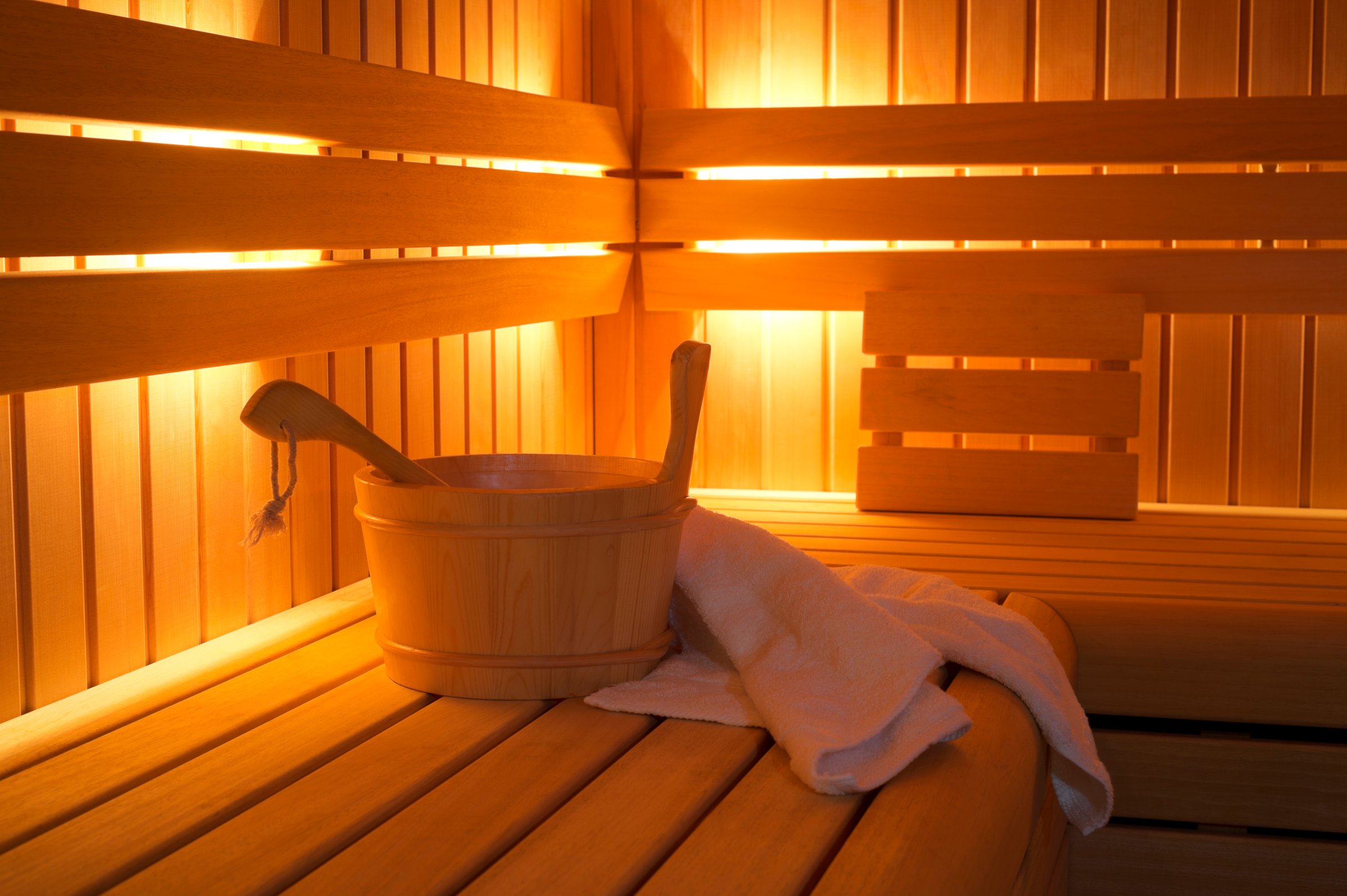
Spending time in the sauna may help lower your chances of developing high blood pressure, say the authors of a recent study in the American Journal of Hypertension. Finnish men in the study who used the sauna four to seven times a week for about 19 minutes each time cut their risk of high blood pressure nearly in half, compared to those who visited just once a week.
The study authors, from the University of Eastern Finland, published research in 2015 linking sauna bathing with a reduced risk of death from cardiovascular disease and sudden cardiac events. Now, they say, they may have one potential explanation for those early findings.
For the study, researchers followed 1,621 middle-aged men living in Finland, where sauna bathing is very common, for an average of 22 years. Only men with normal blood pressure, and who reported visiting a sauna at least once a week, were included in the analysis. Over the next two decades, about 16% of those men developed high blood pressure, defined as higher than 140/90 mmHg.
The men who took just one sauna bath a week were at the highest risk of developing high blood pressure, the authors found after adjusting for factors such as body mass index, smoking, alcohol intake, cardiorespiratory fitness and socioeconomic status. That risk was reduced by 24% for men who took two to three a week, and by 46% for men who took four to seven, compared to once-a-week sauna bathers.
Co-author Dr. Jari Laukkanen, a cardiologist and professor of medicine at the University of Eastern Finland, says that sauna bathing can increase body temperature by up to 2 degrees Celsius (about 3.5 degrees Fahrenheit). This can cause blood vessels to dilate, or become wider, decreasing blood pressure and helping blood flow easier, he says. Sauna bathing can also increase resting heart rate to 100 to 150 beats per minute, he says (up from the average 60 to 100 beats, according to the American Heart Association), improving pumping power.
Sweating can also remove fluid from the body, which may contribute to decreased blood pressure levels. Plus, the authors say, spending time in the sauna likely helps people relax—both physically and mentally—and may protect against the harmful effects of stress.
MORE: You Asked: Is Hot Yoga Good For You—And For Weight Loss?
The study looked specifically at Finnish saunas, which are between 176 and 212 degrees Fahrenheit. The authors point out that their findings may not apply to other types of saunas, steam rooms or hot tubs that may operate at lower temperatures. And even though it controlled for a variety of influencing factors, the study was only able to show an association between sauna frequency and blood pressure—not a cause-and-effect relationship.
The authors also caution that “although sauna bathing seems to be safe and most people can tolerate a typical relatively hot and dry sauna,” people with known heart or blood pressure conditions should watch out for “a rapid drop in blood pressure” that can occur after sauna bathing.
More studies are needed to see if the blood-pressure benefits of sauna bathing translate to other people, including women and people who aren’t regular sauna users. But overall, the authors write that “sauna bathing, an activity that promotes relaxation and well-being, may be a recommendable habit in the prevention of future hypertension.”
More Must-Reads from TIME
- Why Biden Dropped Out
- Ukraine’s Plan to Survive Trump
- The Rise of a New Kind of Parenting Guru
- The Chaos and Commotion of the RNC in Photos
- Why We All Have a Stake in Twisters’ Success
- 8 Eating Habits That Actually Improve Your Sleep
- Welcome to the Noah Lyles Olympics
- Get Our Paris Olympics Newsletter in Your Inbox
Contact us at letters@time.com